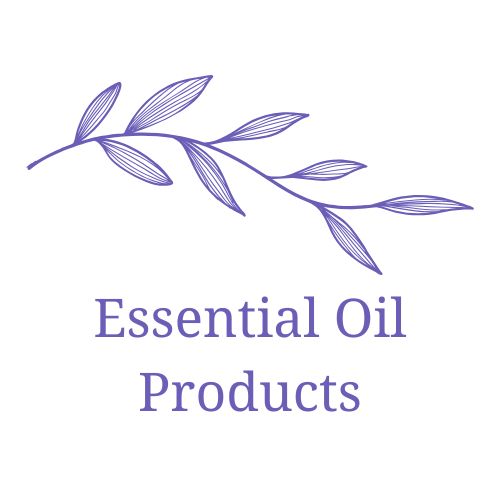Your cart is currently empty!
Spotlight: Tea Tree Essential Oil (Melaleuca alternifolia) – Antimicrobial Powerhouse
Spotlight: Tea Tree Essential Oil (Melaleuca alternifolia) – Antimicrobial Powerhouse
In the vast universe of essential oils, Tea Tree Essential Oil (Melaleuca alternifolia) stands out as a celebrated remedy for various skin ailments and hygiene practices across the globe. With its potent antimicrobial properties, tea tree oil has garnered a reputation not just in beauty products but also in holistic health. Let’s delve into the chemical makeup, clinical evidence supporting its usage, safe topical applications, and even some exciting DIY recipes that can harness its power.
Chemical Profile of Tea Tree Essential Oil
The efficacy of tea tree oil can be largely attributed to its complex chemical profile. This essential oil primarily consists of:
- Terpinen-4-ol: This is the most significant component, making up about 30-40% of tea tree oil. It’s primarily responsible for the oil’s antimicrobial action, hindering the growth of bacteria and fungi.
- Gamma-Terpinene: Typically present in smaller quantities, this compound lends additional antimicrobial properties while also contributing to the oil’s fresh scent.
- Alpha-Terpineol: Known for its pleasant aroma, alpha-terpineol also enhances the oil’s antimicrobial effectiveness, especially against various pathogens.
This unique combination of active ingredients provides tea tree oil with its well-documented therapeutic qualities, including antifungal, antibacterial, and antiviral properties.
Clinical Evidence for Antimicrobial Properties
The scientific community has taken a keen interest in the antimicrobial capabilities of tea tree oil. Numerous tea tree oil antimicrobial studies validate its effectiveness against a range of pathogens. For instance, a study published in the Journal of Antimicrobial Chemotherapy demonstrated that tea tree oil exhibits significant antibacterial action against strains of Staphylococcus aureus, including drug-resistant varieties. This finding highlights its potential role in preventing or treating wounds and infections.
In addition, research has shown that tea tree oil is effective against Candida albicans, a common fungi responsible for yeast infections. Its fungicidal mechanisms often involve damaging the cell walls of the fungus, leading to cell death.
With such potent clinical backing, it’s clear why many people are turning to tea tree oil as a natural alternative for combating infections and promoting skin health.
Safe Topical Use of Tea Tree Oil
While tea tree oil has many benefits, it’s crucial to use it safely, especially since it is a concentrated essential oil. Here are some guidelines for safe topical application:
- Dilution: Always dilute tea tree oil with a carrier oil before applying it to the skin. A general guideline is a few drops of tea tree oil to at least a tablespoon of carrier oil, such as coconut or jojoba oil.
- Skin Tests: Conduct a patch test by applying the diluted oil to a small area of skin to check for any adverse reactions, especially if you’re using it for the first time.
- Frequency: Limit application to a few times a day based on your skin’s tolerance and necessity. Overuse can lead to irritation or adverse reactions.
Being mindful of these recommendations will help you harness the power of tea tree oil while minimizing any risk of irritation.
Tea Tree Oil for Acne Treatment
Among its many uses, tea tree oil has gained popularity as a natural treatment for acne. Due to its superior antimicrobial properties, it’s effective in reducing acne-causing bacteria on the skin. Studies suggest that patients using a 5% tea tree oil gel showed a 60% reduction in acne lesions over a period of 12 weeks.
To create your own tea tree oil acne treatment, combine:
- 2 drops of tea tree oil
- 1 tablespoon of aloe vera gel
Mix these ingredients and apply to affected areas before bedtime for effective results.
DIY Recipes Using Tea Tree Oil
If you’re interested in incorporating tea tree oil into your routine, here are a couple of simple DIY recipes you can try:
Tea Tree Oil Face Wash
- 1/2 cup of unscented liquid castile soap
- 1 cup of distilled water
- 10 drops of tea tree oil
Combine all ingredients in a clean bottle and shake gently before each use. Use it as your regular face wash to help keep acne at bay!
Tea Tree Oil Disinfectant Spray
- 1 cup of distilled water
- 1/2 cup of white vinegar
- 15 drops of tea tree oil
Mix in a spray bottle and use to disinfect surfaces in your home, harnessing the antimicrobial benefits of tea tree oil for a cleaner environment.
Storage and Shelf Life
To retain the quality and efficacy of tea tree oil, proper storage is essential. Keep your essential oil in a dark, airtight container away from sunlight and heat. Typically, unopened tea tree oil has a shelf life of about 3-4 years, while opened bottles may last about a year if stored correctly. Regularly check your oil for any changes in odor or consistency, which can indicate degradation.
As we’ve explored, tea tree essential oil represents a remarkable fusion of nature’s healing touch and scientific validation. By understanding its composition and potential uses, you can safely harness its potent antimicrobial properties in your daily routine, be it for skincare or household applications. Whether you’re battling acne or just looking for a natural disinfectant, tea tree oil can be a valuable addition to your wellness toolkit.

Leave a Reply